The Audi e-tron will always be remembered as the car that marked the inception of the e-tron range. Is the Q8 e-tron a worthy successor? We find out.
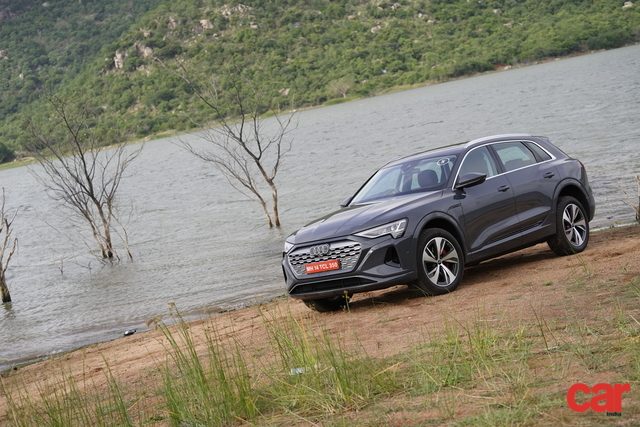
Story: Joshua Varghese
Photography: Sanjay Raikar
The Audi e-tron was the manufacturer’s first production electric SUV. It was a significant car for India as well, being featured among the first luxury electric cars in the country. Audi India’s commitment to electric vehicles (EV) is strictly limited to the top-tier luxury and supercar segment and that continues to be the case. The eponymous e-tron SUV has reached the end of the line and its replacement is the new Q8 e-tron range; essentially a significantly upgraded version of the outgoing e-tron duo. The Q8 e-tron is also being offered in both SUV and Sportback body-styles. We got to experience these cars on the highway and quiet switchbacks and here is our first impression.
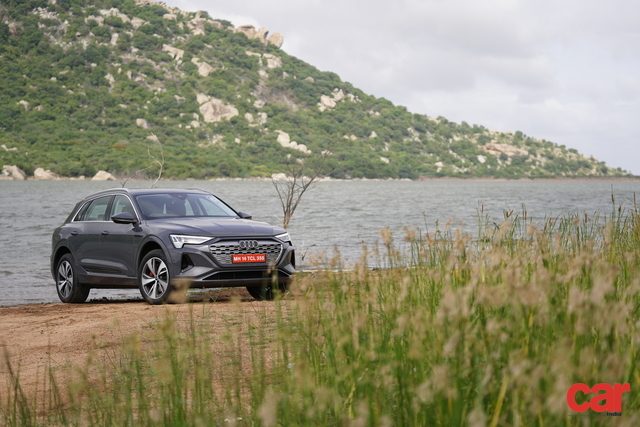
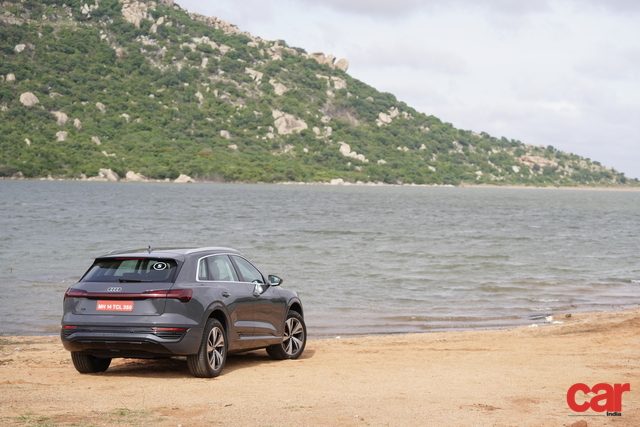
The simple “e-tron” moniker never properly conveyed that it was the brand’s flagship electric SUV, especially to buyers who were making the transition from internal combustion engine (ICE) cars to EV. Therefore, adding its replacement into the Q8 family was a great move. The Q8 e-tron does not look apologetically electric and that is refreshing. Audi have re-written the rules of EV design in their favour and the result is a nice and big car that is elegant in form and true to its function. This also happens to be the first car that dons Audi’s new emblem, a two-dimensional version of the four rings. To drive the point home further, they have placed it under a small lip of lighting below the bonnet that gives it a halo effect. Tasteful, just like the subtle badge on the B-pillar.
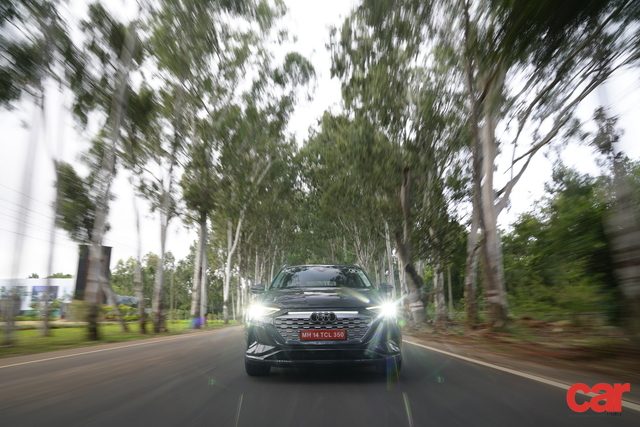
Excellent illumination with a touch of playfulness was one of the e-tron’s hallmarks and that has been retained in these cars as well. Both the Q8 e-tron and the Q8 e-tron Sportback are slightly longer than the cars they replace. The former has the typical German SUV stance while the latter offers most of that poise along with a sloping roof. Although both look the part of luxury flagships, I took a liking to the more streamlined Sportback.
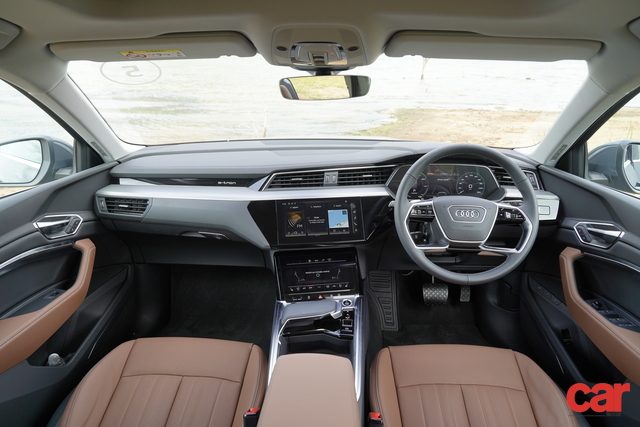
The interior will look and feel contemporary to most people but familiar to the regular patrons of Audi. With no weak links in terms of the quality of material and fit-and-finish, the high standards of German workmanship are evident and most of the luxury-related expectations are met. There are options to enrich this experience, including different upholstery, ventilated/massage seats for the front and choices for visual improvement. The car I drove was fully loaded and felt like nothing short of a lounge on wheels. The front seats provided a good balance between luxury and sporty intent, holding me in place through fast corners without compromising on comfort. Although spacious and plush, the second row is not as luxurious as the front seats. The Q8 e-tron struck me as a luxury SUV for the family rather than a chauffeur-driven car. The cavernous boot space further adds to that impression. However, I feel a shorter loading bay would have been appreciated.
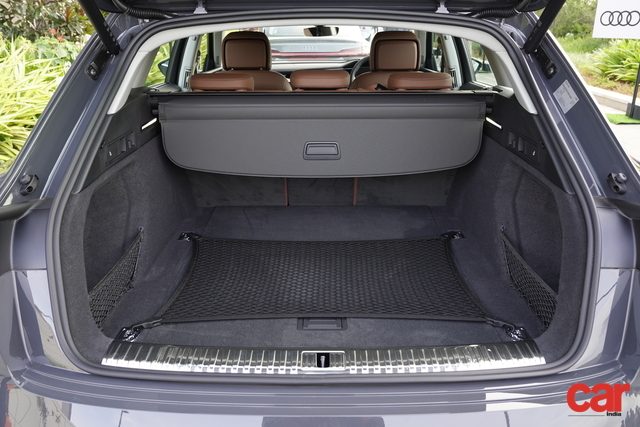
Infotainment is managed by a large touchscreen that offers a crisp display and a touchscreen interface with haptic feedback. Somehow, it feels friendlier to use than a conventional touchscreen. It is surprising that wireless Apple CarPlay has not been included in the list of features. Connecting the phone via a cable is simple enough but it is hardly luxury, is it not so? That wrinkle was crisply ironed out by the capable Bang and Olufsen 3D surround sound system which banks on 16 speakers and the output is both immersive and exquisite.
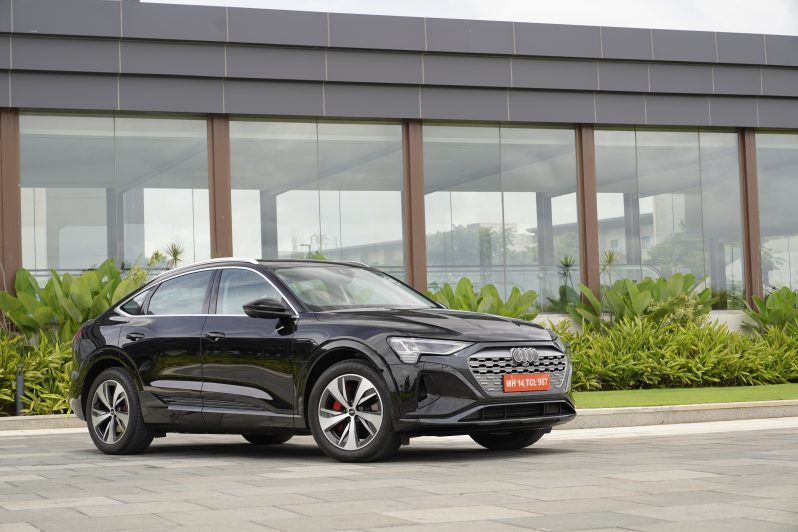
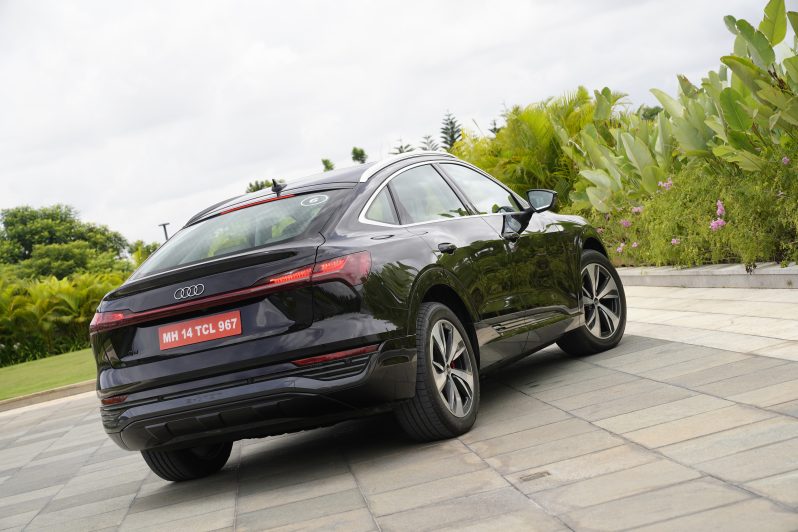
The battery is among the biggest improvements. Under the cabin sits a 114-kWh battery. Audi claim that they were able to achieve this without altering the dimensions of the car due to a new cell chemistry and a better form of packing. Furthermore, the charging system has also been upgraded to 170 kW, which significantly cuts down the charging time. By providing charging ports on both sides of the car, Audi have further improved convenience. Range has increased as well. They claim up to 600 kilometres on a single charge. Sounds like a relaxing Pune-Goa drive to me.
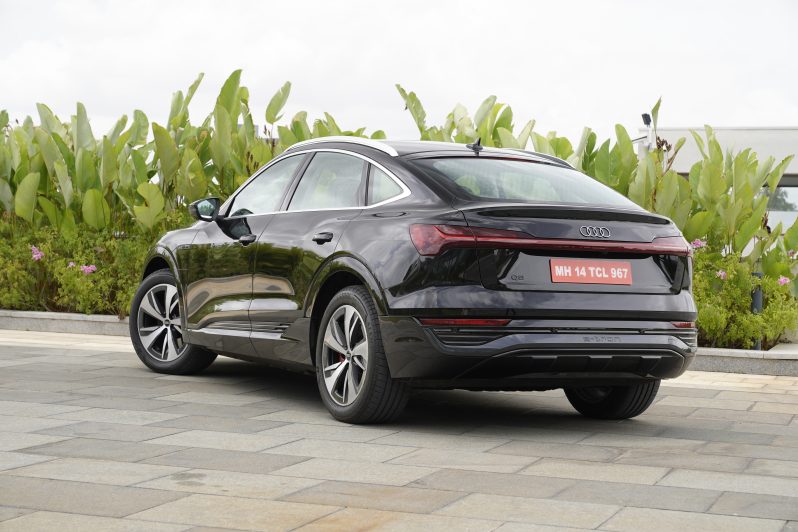
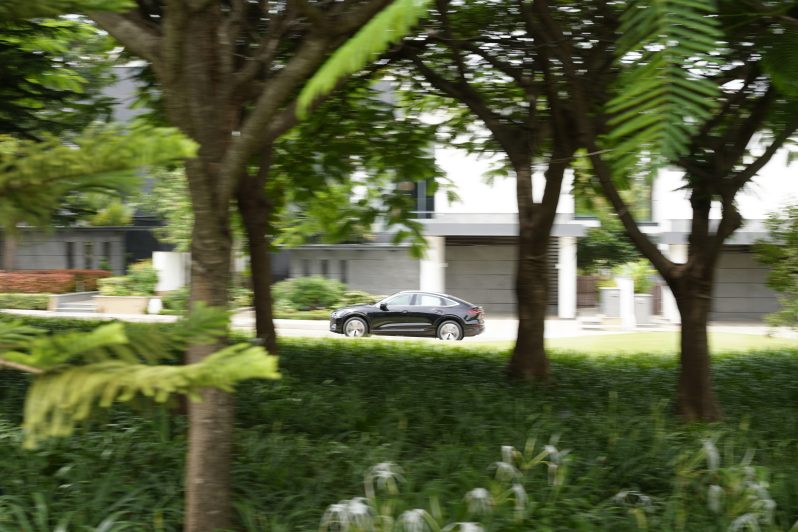
Both the Q8 e-tron SUV and the Sportback get a motor on each axle along with the Quattro system. They generate a combined output of 408 hp and 664 Nm of torque. In most cases, power is sent to the rear wheels. The front wheels are driven only when the situation demands it. Audi also claim that this 2.5-tonne car moves from 0 to 100 km/h in 5.6 seconds. Certainly feels like it. To say this car is fast is an understatement. It is more than that. Its outright acceleration is better than any of its ICE rivals. Torque is supplied instantly and dispatched to the ground with prime traction thanks to the quattro system. The way 2.5 tonnes of car surges forward was alarming initially but it grew on me quite easily; primarily because it handles like a smaller car.
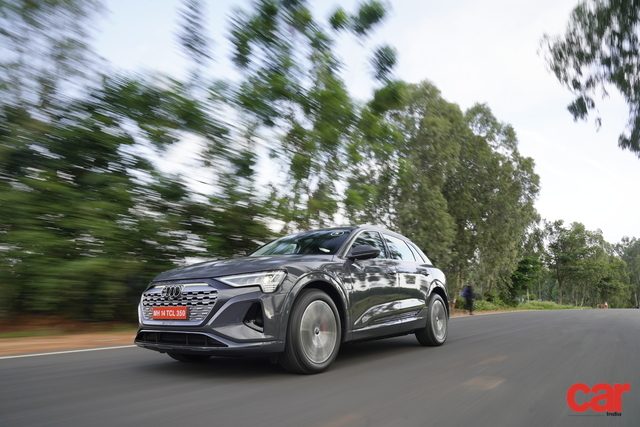
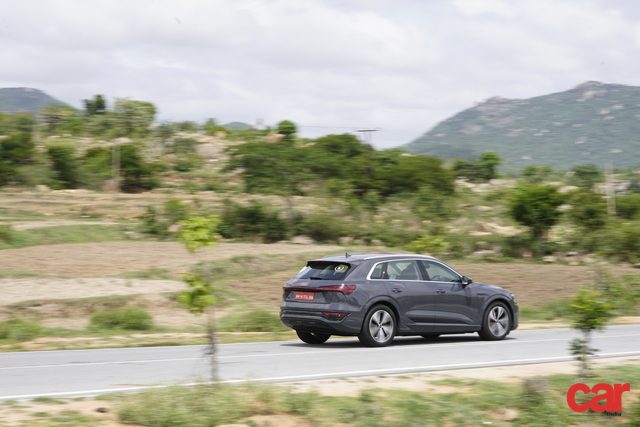
The steering feels direct and more positive than the e-tron’s. It responds to even the slightest of input and the execution is precise. Even at high speed, it is not scary to blast the Q8 e-tron around corners. Audi’s expertise with the air suspension is commendable. It holds the road well, soaks bumps perfectly, and keeps the car planted with minimal body-roll. One of the most relevant upgrades is the energy regeneration system. Now one can use the paddle-shifters to set the desired levels of regeneration.
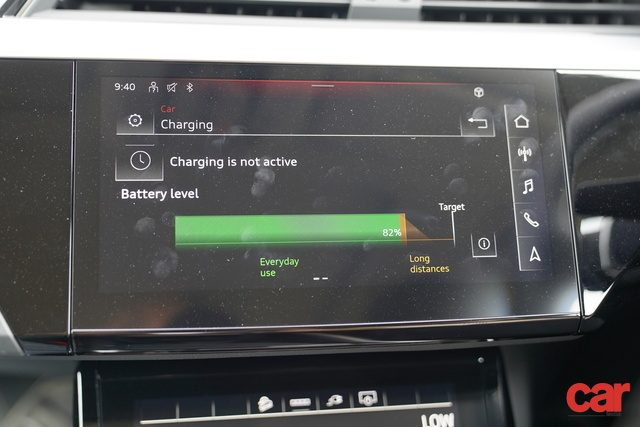
There are as many as seven driving modes on offer, including auto, off-road, allroad, comfort, efficiency, dynamic, and individual. Parameters such as steering feel, ride height, power delivery, and energy regeneration have been optimized for each mode, allowing one to achieve exactly what one is looking for in terms of performance or range. Furthermore, it also gets a range mode that shuts down all unnecessary auxiliary systems and focuses on extracting the maximum possible range from the car under those circumstances.
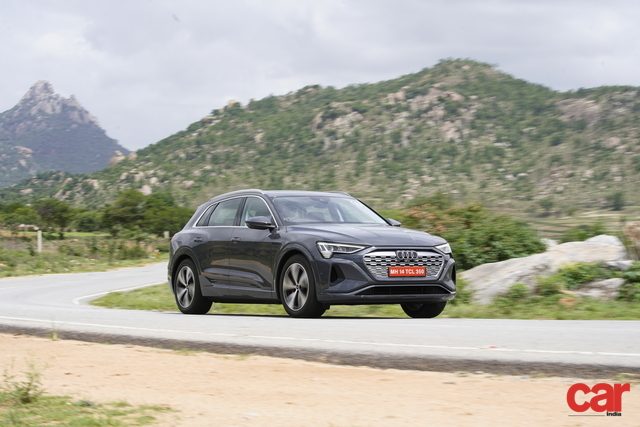
In Dynamic mode, it remains closest to the ground, most sensitive to throttle input, and most positive with the steering. The launch is brutal and the acceleration is further violent. Once into 100-plus km/h speeds, things slow down; relatively, of course. Audi claim that it will go on to attain a top speed of 200 km/h. After hurtling down a deserted stretch of road, I was pleased to see that the Q8 e-tron’s capabilities extend to more than belting down a straight road. The car uses regenerative braking most of the time and calls on the disc brakes only when the demand for braking exceeds a certain amount of force. Deceleration is immense and the feel for grip is precisely conveyed through the steering wheel. During rapid changes of direction, the weight of the Q8 e-tron is evident but I felt that it was better distributed than in the car it replaces.
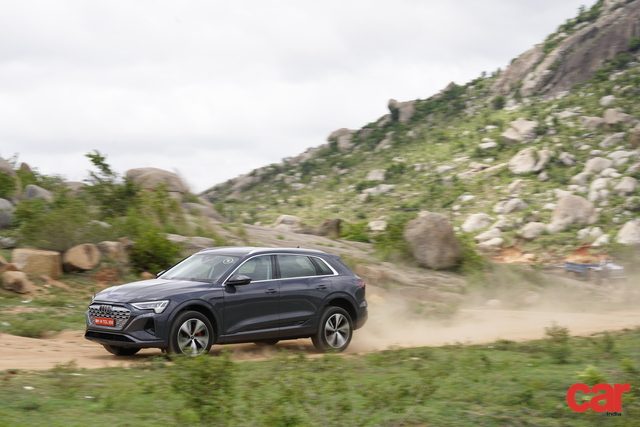
The air suspension that keeps the Q8 e-tron planted around fast corners in Dynamic mode also works its magic in other modes. The 176-millimetre ground clearance can be adjusted by 76 mm overall, making the car lower or taller according to one’s convenience. In Comfort mode, the ride is supple—appropriate for a luxury SUV—and I suspect this is what most people will use in town. Off-road is equally useful because, despite venturing off the beaten track several times and choosing poor roads, the car went through all of it without a scratch.
At the time of this drive, we were not informed about the price of both these cars, but we expect them to cost more than the outgoing e-tron. Thus, between Rs 1.2 and Rs 1.6 crore, if we are being reasonable. Regardless of what the price may be, what I can say for sure is that if you liked the e-tron cars, then this is easily well worth the premium.
The Q8 e-tron cars are the new flagship and they feel every bit special in that regard. From my experience, these cars are simply better in every way than the cars they replace and that is ideal progress in my books.
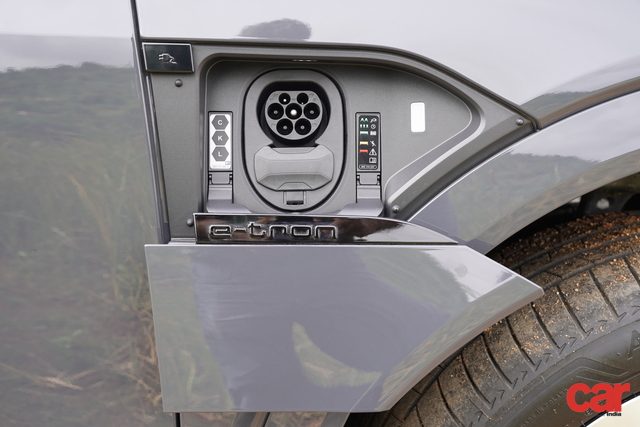
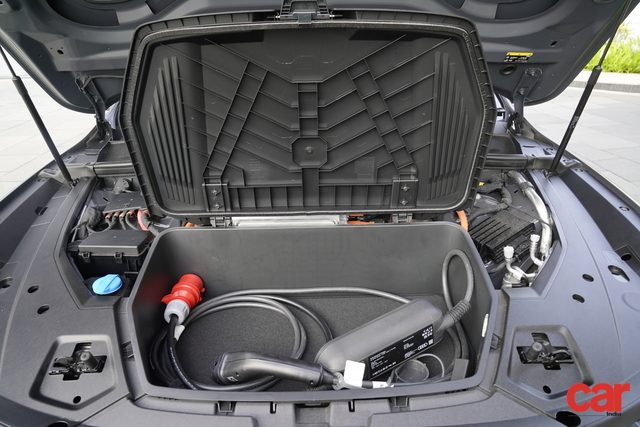
Price (ex-showroom):
Audi Q8 50 e-tron: Rs 1.13 crore
Audi Q8 55 e-tron: Rs 1.26 crore
Audi Q8 Sportback 50 e-tron: Rs 1.18 crore
Audi Q8 Sportback 55 e-tron: Rs 1.30 crore
Also Read: Citroën C3 Aircross First Drive Review


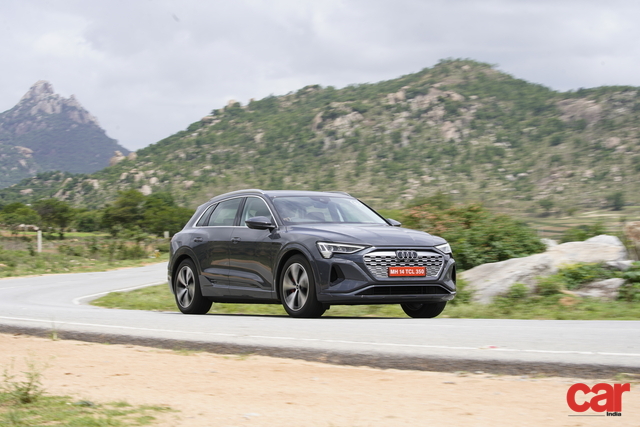









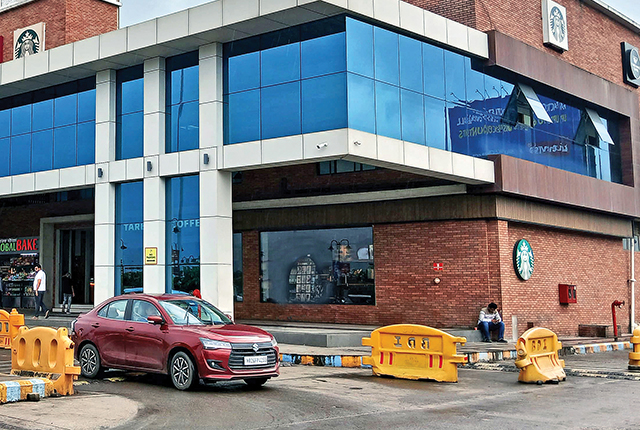








Leave a Reply